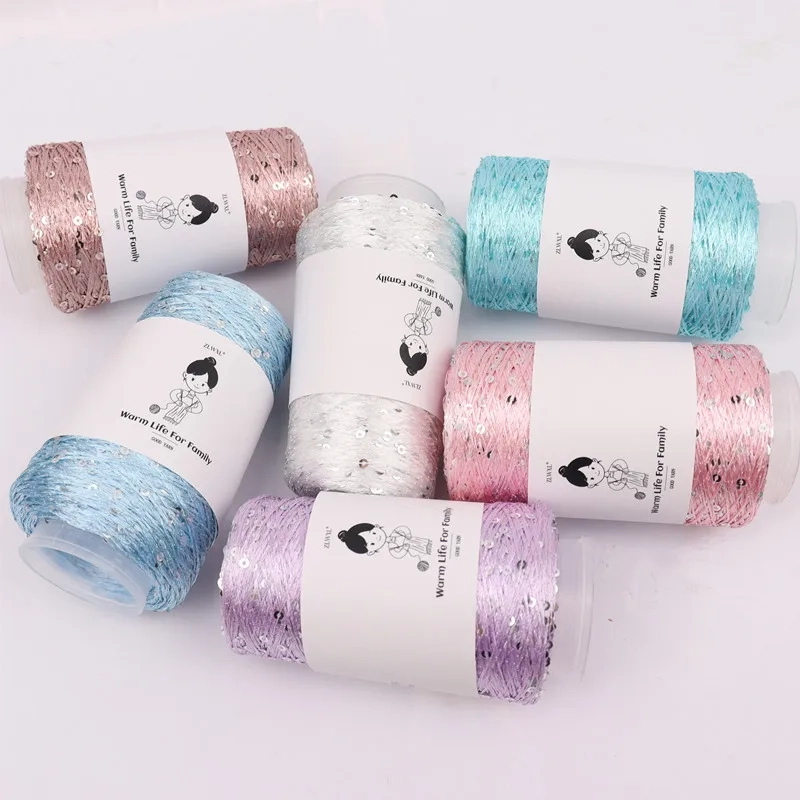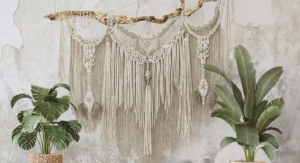Crocheting with silk yarn is a versatile and rewarding craft, allowing artisans to create everything from practical apparel to intricate home decor. One of the most luxurious materials you can use for crocheting is silk yarn. Renowned for its beautiful sheen, incredible softness, and durability, silk yarn is a favorite among crocheters who desire an opulent touch to their projects. However, crocheting with silk comes with its own set of challenges. This blog post will offer practical tips and techniques to help you successfully crochet with silk yarn, whether you’re a beginner or an experienced crafter.
Understanding Silk Yarn
Before diving into tips and techniques, it’s important to understand the characteristics of silk yarn that make it both desirable and challenging to work with.
Characteristics of Silk Yarn
- Smooth Texture: Silk yarn is known for its smooth, slippery texture, which can make it difficult to handle.
- High Sheen: The luster of silk is unmatched, offering a beautiful finish to any project.
- Strength and Durability: Despite its delicate appearance, silk is a strong fiber, making it ideal for long-lasting creations.
- Lightweight: Silk is lighter than many other natural fibers, which makes it perfect for garments and accessories.
Now that we know what makes silk yarn special, let’s explore some tips and techniques to help you crochet with this luxurious fiber effectively.
Tips for Crocheting with Silk Yarn
1. Choose the Right Hook Size
Choosing the right hook size is crucial when working with silk yarn. The smooth texture of silk can cause your stitches to slip unexpectedly, so a hook with a slightly larger size than usual can help maintain consistent tension.
Recommendations:
- Use a hook half a size or a full size larger than you would typically use for the weight of the yarn.
- Opt for hooks with grips or ergonomic handles to reduce hand fatigue and improve control.
2. Adjust Your Tension
Maintaining even tension is one of the most critical aspects of crocheting with silk yarn. Too tight, and you risk splitting the yarn; too loose, and your stitches may become uneven.
Techniques for Adjusting Tension:
- Practice Stitches: Before starting your project, spend some time practicing basic stitches with the silk yarn to get a feel for the correct tension.
- Use Stitch Markers: Place stitch markers at regular intervals to help keep your tension consistent.
- Monitor Your Progress: Regularly check your work to ensure that your stitches are even and uniform.
3. Prevent Slippage
Silk yarn’s smooth texture can make it prone to slipping out of your hand or off your hook. Here are some techniques to keep control.
Techniques for Preventing Slippage:
- Wrap the Yarn Around Your Finger: For better grip, wrap the yarn around your pinky finger once or twice.
- Hold the Hook Like a Pencil: This grip can sometimes offer better control for silky yarns compared to holding the hook like a knife.
- Use a Slip Knot: Start your project with a tight slip knot to prevent the initial stitches from slipping.
4. Choosing the Right Pattern
Selecting the right pattern can make a significant difference when working with silk yarn. Simple, open patterns showcase the yarn’s sheen and reduce the risk of splitting.
Tips for Pattern Selection:
- Opt for Simple Stitches: Patterns with basic stitches like single crochet (sc) or double crochet (dc) tend to work better with silk.
- Avoid Complex Patterns: Intricate patterns can get lost in the sheen of the silk, and the yarn may split during complicated maneuvers.
- Textured Patterns: Lightly textured patterns can add visual interest without overwhelming the natural beauty of the silk.
5. Blocking and Finishing
Blocking is an essential step for most crochet projects, but it’s especially important when working with silk yarn. Proper blocking can help even out stitches and give your project a polished look.
Blocking Techniques:
- Wet Blocking: Soak your finished piece in lukewarm water with a little mild detergent or fabric conditioner. Gently squeeze out excess water and lay it flat to dry, shaping it to the desired dimensions.
- Steam Blocking: Hold a steam iron above your piece and lightly steam, then gently shape the project. Avoid touching the iron directly to the silk to prevent damage.
- Use Blocking Mats and Pins: For best results, use blocking mats and rust-proof pins to hold your project in place as it dries.
6. Handling and Care
Silk yarn requires special care to maintain its luxurious texture and appearance.
Care Instructions:
- Hand Wash Only: Silk should be washed by hand in cold water with a mild detergent.
- Avoid Wringing: Gently squeeze out excess water; never wring silk as it can damage the fibers.
- Dry Flat: Always dry flat to maintain the shape and avoid stretching.
- Store Properly: Store silk projects in a cool, dry place away from direct sunlight to prevent fading and deterioration.
Recommended Projects for Silk Yarn
Silk yarn is an excellent choice for a variety of projects, especially those that benefit from its sheen and drape.
Garments
- Scarves and Shawls: The drape and sheen of silk make it perfect for elegant scarves and shawls.
- Lightweight Sweaters: Silk’s breathability and softness lend themselves well to lightweight sweaters and cardigans.
Accessories
- Hats and Gloves: Although silk is lightweight, it is also insulating, making it suitable for accessories like hats and gloves.
- Jewelry: Incorporate silk yarn into crochet jewelry for a luxurious touch.
Home Decor
- Pillows and Cushions: Add a touch of elegance to your home with silk crocheted pillow covers.
- Table Runners and Doilies: The sheen of silk makes it ideal for decorative table pieces.

700M 100g/Spool Summer ice silk Mercerized yarn
Crafted with the warm-season knitter in mind, the Summer Ice Silk Mercerized Yarn is a luxurious addition to any hand knitting project. This remarkable yarn is specifically designed to bring a touch of cooling comfort and elegance to your creations, making it perfect for those sultry summer days.
Troubleshooting Common Issues
Even experienced crocheters can encounter issues when working with silk yarn. Here are some common problems and solutions.
Issue: Splitting Yarn
Solution: Use a hook with a rounded head and ensure you’re maintaining the correct tension. If the yarn continues to split, try another brand with a tighter twist.
Issue: Uneven Stitches
Solution: Consistently monitor your work and adjust your tension as needed. Practicing on scrap pieces of silk yarn can also help you find the right tension.
Issue: Losing Stitches
Solution: Use stitch markers to keep track of your stitches, and count your stitches regularly to ensure you haven’t missed any.
Issue: Slipping Yarn
Solution: Adjust your grip or try wrapping the yarn around your fingers differently for better control. You might also switch to a hook with a better grip.
Conclusion
Crocheting with silk yarn offers a luxurious experience and a stunning finish to your projects. By selecting the right hook size, maintaining proper tension, preventing slippage, and choosing appropriate patterns, you can work with silk successfully. Proper care and handling will ensure that your beautiful silk creations remain in pristine condition for years to come.
Whether you’re a beginner making your first foray into luxury fibers or an experienced crocheter looking to refine your skills, these tips and techniques will help you master the art of crocheting with silk yarn. Happy crocheting!








